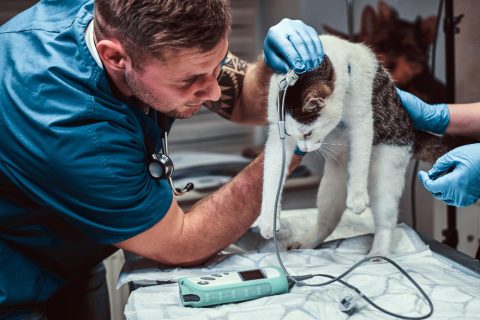When emergencies strike our furry companions, knowing how to act quickly can be the difference between life and death. Cardiopulmonary resuscitation (CPR) for pets isn’t just a vet’s job — it’s a vital skill every pet owner should learn. Whether you live in a high-rise apartment in NYC or enjoy the open trails of Colorado with your dog, having basic CPR knowledge could one day save your pet’s life.
Contents
Why Pet CPR Knowledge Matters
What Happens During Cardiac Arrest
Cardiopulmonary arrest (CPA) occurs when a pet’s heart suddenly stops beating and breathing ceases. This can result from trauma, toxin exposure, choking, heart conditions, or underlying health issues. Without immediate action, brain damage or death can occur within four minutes due to a lack of oxygen.
When Should You Use CPR on Your Pet?
If your pet is unconscious, unresponsive, and not breathing, CPR may be necessary. However, it’s crucial to first assess the situation. If you are alone and cannot call for help, transporting your pet to an emergency clinic is your best bet. CPR should not delay professional care.
How to Tell If Your Pet Needs CPR
Initial Assessment Steps
- Call your pet by name and gently shake them.
- Look for breathing – Is the chest rising and falling?
- Check their airway – Remove visible obstructions without pushing anything deeper.
CPA vs Unconsciousness: Key Differences
- A pet that resists when you open its mouth likely doesn’t need CPR.
- If your pet is breathing or responsive in any way, do not perform CPR but get them to a vet immediately.
- If there’s no breathing, no heartbeat, and your pet shows no response, begin CPR.
For a helpful visual reference on dog and cat CPR, check out the infographic in the resources section below.
Performing CPR on Your Dog or Cat
Step 1 – Lay Them on Their Side
Place your pet on their right side. Kneel beside them with their spine toward you. Position your hands as follows:
- Medium to Large Dogs: Hands over the widest part of the chest.
- Keel-Chested Breeds (e.g., Greyhounds): Hands directly over the heart.
- Flat-Chested Dogs: Lay them on their back and compress the sternum.
- Cats & Small Dogs (<15 lbs): Use one hand to wrap around the chest with your thumb over the heart.
Step 2 – Chest Compressions Based on Pet Type
- Compress the chest 100–120 times per minute.
- Press to a depth of 1/3 to 1/2 the chest width.
- Allow full chest recoil after each compression.
To locate the heart, pull the elbow back towards the chest — the point where the elbow meets the body is a good guide.
Step 3 – Mouth-to-Snout Breathing
- Close the pet’s mouth gently.
- Extend the neck so it aligns with the spine.
- Create a seal over their nostrils with your mouth.
- Give two quick breaths and check for chest movement.
Step 4 – Cycle and Repeat
- Do 30 compressions, then 2 breaths.
- Pause compressions briefly for breathing.
- Continue cycles until your pet starts breathing or you reach professional care.
If another person is available, take turns every two minutes to avoid fatigue.
Step 5 – When to Stop CPR
Stop CPR if:
- Your pet regains consciousness or starts breathing.
- You arrive at a veterinary clinic.
- You become too exhausted to continue.
Transporting Your Pet to Emergency Care
CPR is a bridge — not a replacement for veterinary intervention. If possible, have someone drive while you continue CPR. Use a towel or blanket as a sling to move your pet safely to the car. Never attempt CPR while driving.
If you’re in a pet-friendly city like Portland or exploring pet-friendly hotels in Savannah, knowing the location of the nearest 24-hour emergency vet is always smart. For those living in remote areas or states like Utah, Oregon, or Indiana, be sure to pre-plan emergency resources.
Additional Resources and Takeaways
Knowing CPR is one part of being a prepared pet parent. Other essentials include:
- Keeping your pet’s medical records handy (especially if using ASPCA pet insurance discounts or USAA pet insurance).
- Storing a pet first-aid kit.
- Understanding your pet’s medical conditions, like IVDD or allergies.
- Exploring insurance options from providers like Liberty Mutual pet insurance, Sainsbury’s pet insurance, or Pet Insurance Colorado.
And don’t forget to check your policy through your pet insurance comparison chart or Pet Partners login.
Stay prepared. Stay calm. You might just save a life.
Resource: Cornell University CPR Infographic (PDF)
This article is for informational purposes only and does not replace professional veterinary care.








